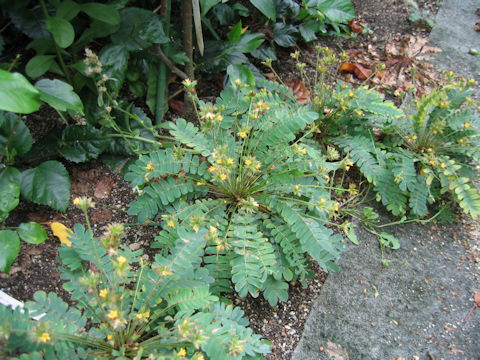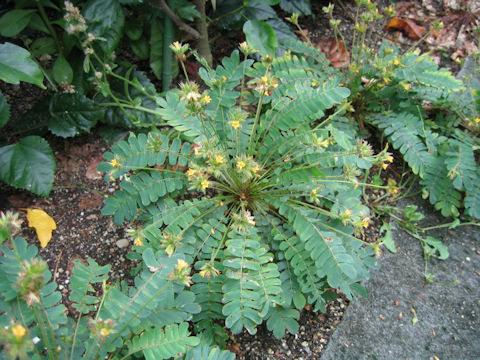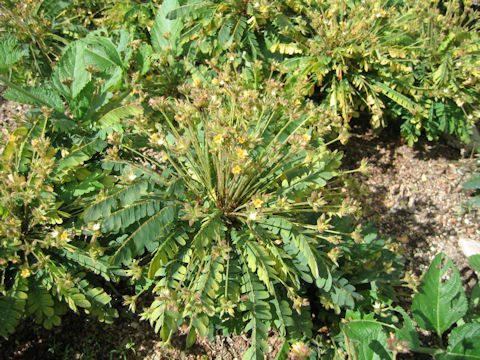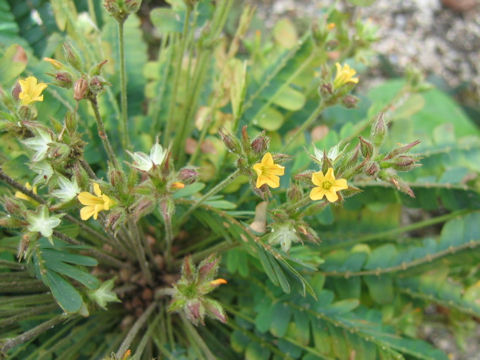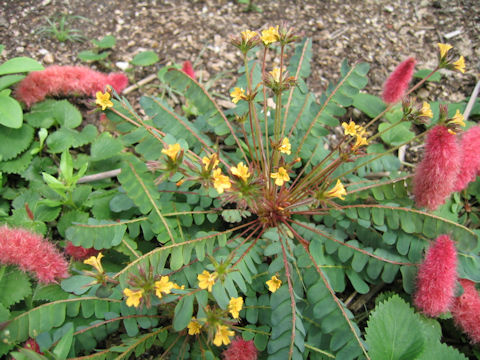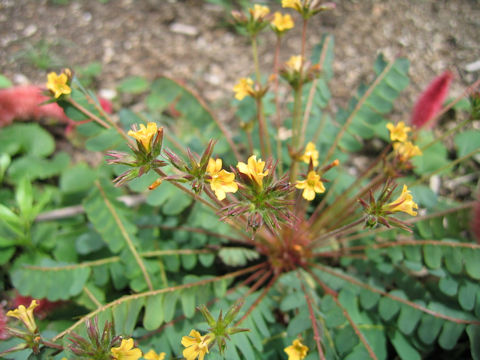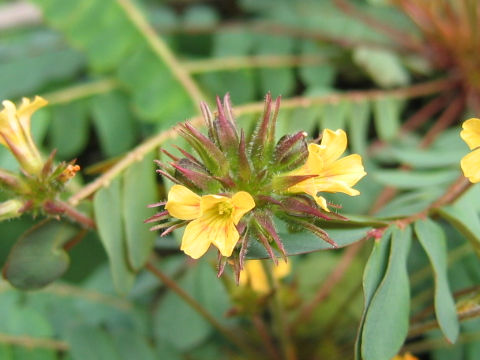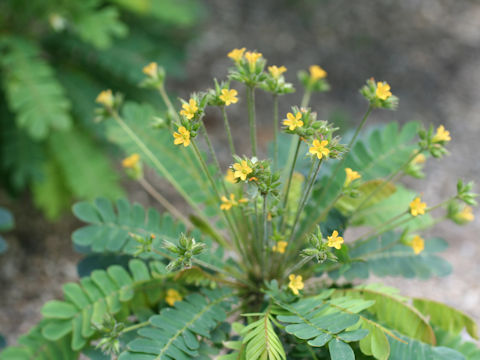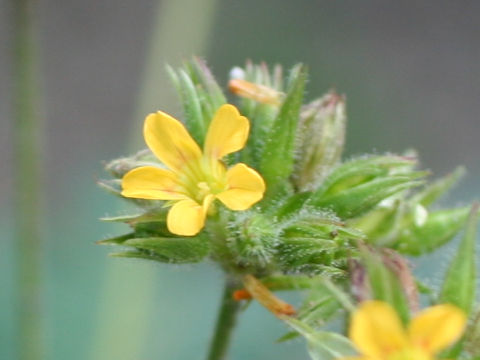
|
The Life plant (Biophytum sensitivum) belongs to Oxalidaceae (the Wood sorrel family). It is a perennial herb that is distributed in Taiwan, China, tropical Asia, and tropical Africa. It was introduced to Japan at the end of the Meiji period (1868-1912). The stem is unbranched and hairy, and grows to a height of about 30 cm. Leaves form an even pari-pinnate compound with 18 to 30 oblong leaflets. It produces small yellow flowers in umbels from July to September. It is a moving plant like the "Sensitive plant" (Mimosa pudica) and folds its leaflets when touched. In greenhouses, it is regarded as a troublesome plant because its seeds are released like those of the "Yellow sorrel". In Taiwanese Chinese, it is called "羞禮花" and in Chinese, "感應草" (gan ying cao).
|

